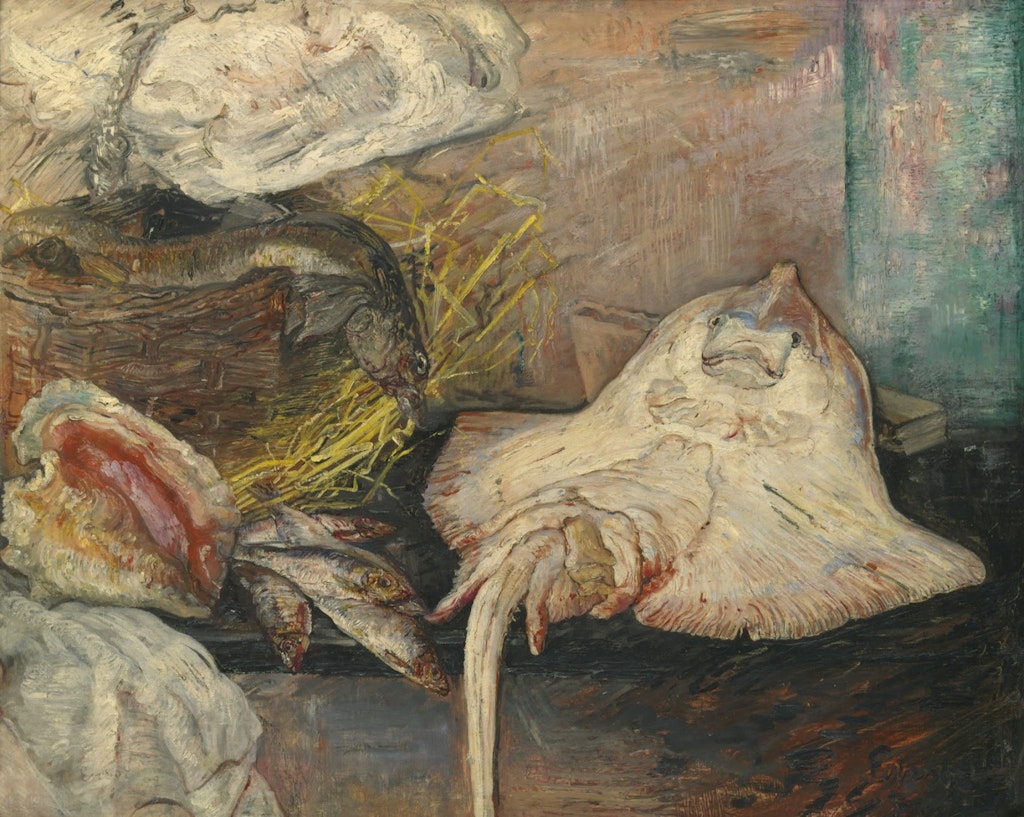This article is taken from the February 2024 issue of The Critic. To get the full magazine why not subscribe? Right now we’re offering five issues for just £10.
Amongst Raphael’s many assistants and collaborators, the most important was Giulio Romano (c1499–1546). According to the 17th century biographer Filippo Baldinucci, Giulio “was so reverent and modest towards his teacher that, whilst he was alive, he did not even allow his own work to be made into prints, so that no one would think that he was competing with such an incomparable man”.
However, a few years after Raphael’s death, reverence and modesty were nowhere to be seen when a series of engravings after Giulio’s designs became both notorious and dangerous. The genesis of the prints is unclear but around 1524, Giulio made a number of drawings probably in preparation for paintings to decorate the Palazzo Te, the Duke of Mantua’s new pleasure palace.
The drawings were at some point engraved by Giulio’s regular associate Marcantonio Raimondi, another member of Raphael’s circle. What distinguished this particular collaboration (although Giulio may not have known about the prints) was the subject.
In 16 images, Giulio showed athletic and pliable men and women having explicit, spine-stretching and extraordinarily imaginative sex. They were, said Baldinucci, “the most obscene representations that could ever be imagined in the fantasy of the most ill-bred person”.
Baldinucci claimed that Giulio’s designs were based on the descriptions of Elephantis, a Greek poetess and author of a sex manual famous in antiquity. None of her works have survived, but the emperor Tiberius is said to have taken a set of her books with him to his erotic retreat on Capri.
But although Giulio’s pictures may have stemmed from the humanist interest in the Classical past, his Michelangelesque figures did not depict gods and goddesses, and his lovers were engaged not in lovemaking but emphatically in sweaty sex.
All copies of the book were confiscated and burned: not a single copy is known to exist
When the suite of prints was published as I Modi (“The Positions”), the Medici Pope Clement VII had Marcantonio imprisoned and all copies of the book confiscated and burned: not a single copy is known to exist. Giulio was not prosecuted because his drawings were not meant for the public, and he was living outside the Papal States.
Marcantonio’s incarceration did, however, arouse the indignation of Pietro Aretino — satirist, poet, fly-by-night, provocateur and “Scourge of Princes”. He traded on his past assistance to Clement, for whom he had written scurrilous verses and assorted propaganda in his campaign for the papacy, and petitioned for the engraver’s release. “What harm is there in seeing a man mount a woman?” he asked.
Later, as Aretino wrote with more than a little vaingloriousness, “After I arranged for Pope Clement to release Raimondi, I desired to see those pictures which had caused the [Vatican] to cry out that their creators should be crucified,” and visited Mantua to see Giulio at work on the paintings. “As soon as I gazed at them, I was touched by the spirit that had moved Giulio Romano to draw them,” he recalled.
So touched, in fact, that he wrote 16 sonnets to accompany Marcantonio’s prints. This second edition of I Modi was published in 1527 and was even more offensive than the first. It met the same fate too; every copy was destroyed.
Aretino’s closeness to Clement was not enough to grant him safety. Martin Luther’s criticisms of Rome’s debauchery were fresh and, recklessly, Aretino had included the names of real members of the curia in the Sonetti Lussuriosi (“Lustful Sonnets”), one of whom was Gian Matteo Giberti who ordered Aretino’s arrest.
Giberti had already sponsored an assassination attempt on Aretino in 1525 that left the poet injured in his chest and hand. With this latest threat, he promptly fled to Venice where he acquired a new artist friend, Titian, and forged a lucrative career as a blackmailer. Aretino eventually died there as (wrote Edward Hutton in 1922) “a dog dies without a thought of repentance in the midst of a howl of blasphemy and laughter”.
Despite the Vatican’s book-burning, I Modi lived on. There are fragments of near contemporaneous engravings in the British Museum and the Albertina in Vienna; the “Toscanini volume”, once owned by the conductor’s son, was a pirate edition made in Venice in the late 1520s; there were engravings and woodcuts after Marcantonio’s work which gave a low-quality impression of the originals.
Meanwhile, Giulio’s original drawings were, it was claimed, found in the Gers region of France in 1884 having been in the possession of one of Louis XVI’s courtiers; whilst the fantasist and self-proclaimed “Comte” de Waldeck said he discovered “a book of postures by Marcantonio” in a convent in Mexico in the 1830s and made tracings from them.
This rich tale of great artists, pornography and the papacy has made I Modi one of the most fabled of all books. There are 235 known copies of Shakespeare’s First Folio in existence, 21 complete Gutenberg Bibles, 120 volumes of Audubon’s Birds of America but not a single known copy of I Modi.
This year, exactly five centuries since its inception, would be a propitious time to unearth a copy of the book that so frankly celebrated what Aretino called “The thing nature gave us to preserve the race”, an act that produced all the “Titians, and the Michelangelos; and after them the Popes, the Emperors, and the Kings”. As such, he says, it deserves that we “should consecrate special vigils and feast-days in its honour”.
Enjoying The Critic online? It's even better in print
Try five issues of Britain’s newest magazine for £10
Subscribe



